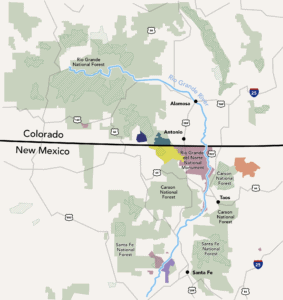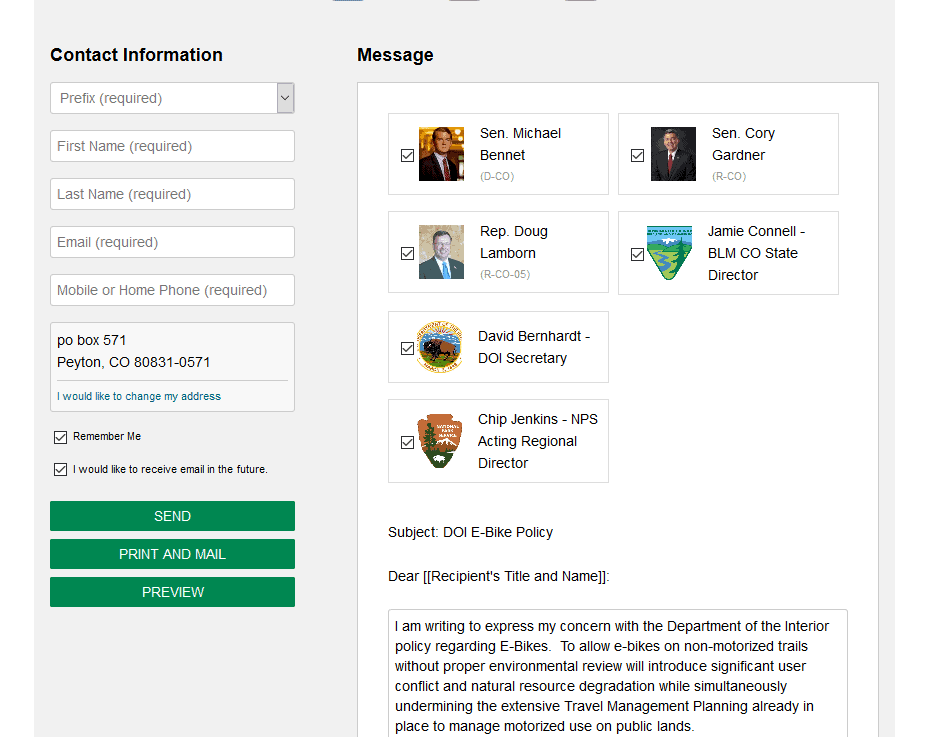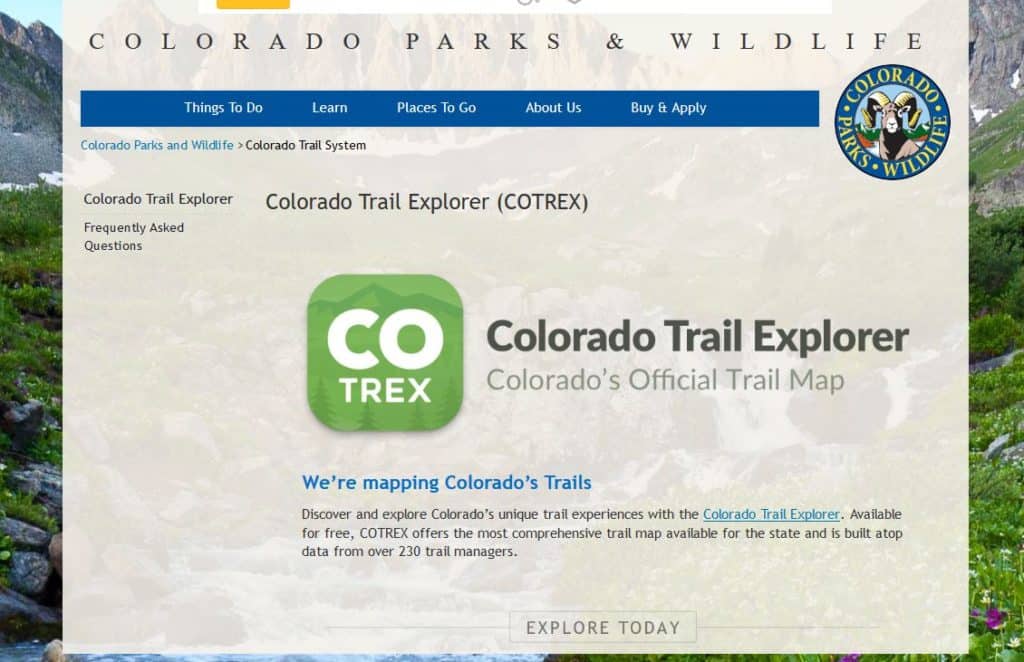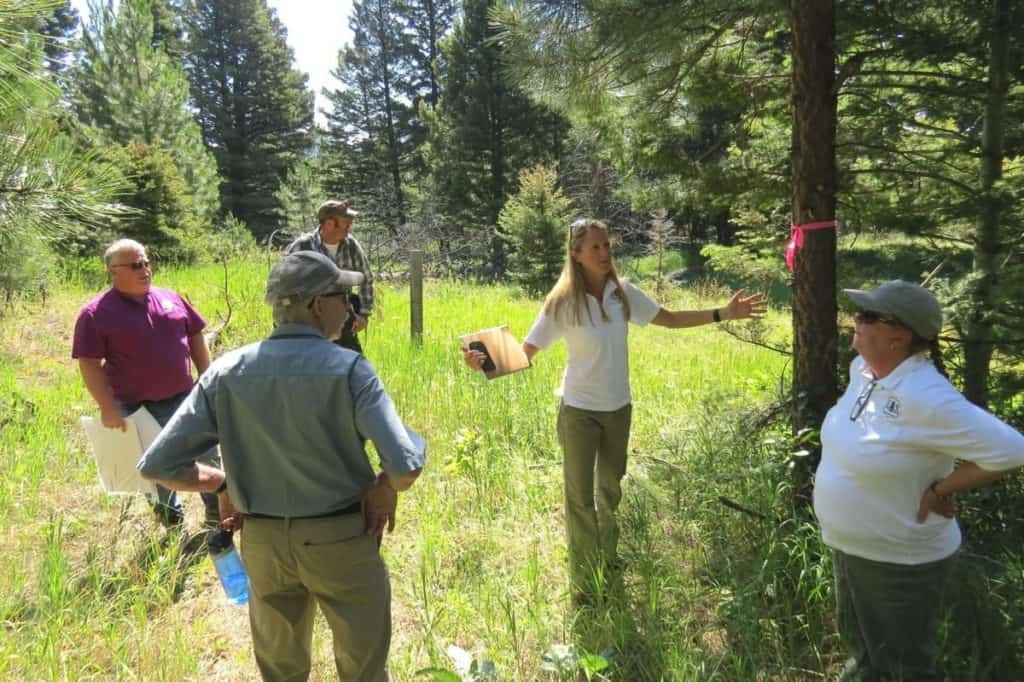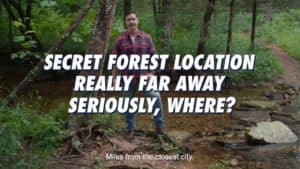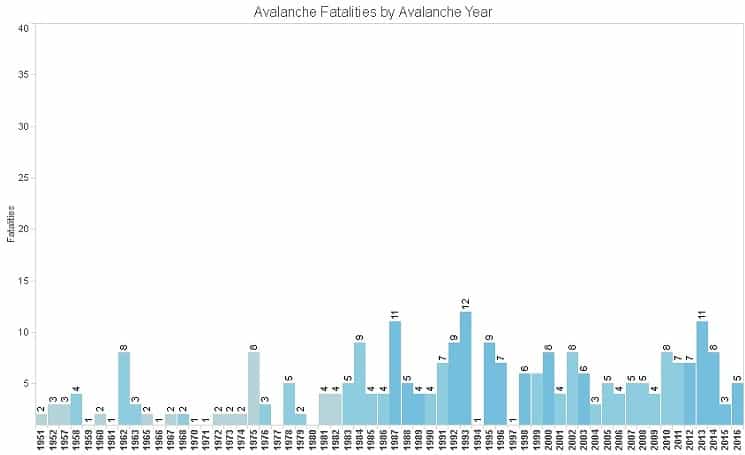This article by Jason Blevins is my favorite article so far, as it explains things clearly, shows a variety of nuanced perspectives, and even asks the BLM folks what they are doing, as well as having a link to the order itself.
In the order, Bernhardt cited a desire to reduce management burdens and clarify “regulatory uncertainty” around e-bike rules on public land. No one can argue with that. State and federal regulations governing e-bikes do not always align in Colorado.
e-bikes used to be considered off-road vehicles
Colorado lawmakers in 2017 embraced a national standard, establishing three-classes of pedal-equipped e-bikes, based on speed and how the rider engages an electric motor no larger than 750 watts, or roughly one horsepower.Class 1 e-bikes engage only when the rider is pedaling and have a top speed of 20 mph.
Class 2 e-bikes engage with a throttle and have a top speed of 20 mph.
Class 3 e-bikes engage when pedaled and have a top speed of 28 mph.
The 2017 state law allows Class 1 and Class 2 e-bikes on paths where bikes are allowed to travel and gives local jurisdictions the ability to prohibit e-bikes.Federal land managers have regulated e-bikes as motorized vehicles. The BLM, prior to Bernhardt’s order, classified e-bikes as “off-road vehicles.” The Forest Service in 2015 and again in 2017 defined e-bikes as “motorized bicycles.” Both those designations emphasized the motor in e-bikes and kept e-bikes off trails designated for nonmotorized activity.
……………..
Here’s what IMBA thinks..they seem pretty reasonable to me.
The Colorado-based International Mountain Bicycling Association, or IMBA, heard this summer that an e-bike rule for the BLM and NPS was pending.
What surprised the group was the lack of differentiation between the three classes of e-bikes, essentially lumping in throttle-charged bikes with bikes that deliver power only when pedaled.
IMBA has supported Class 1 e-bikes on trails, as long as local land managers and mountain bikers are involved in the process of reviewing and approving that access, said IMBA’s executive director and legendary mountain biker David Wiens.
But most important, Wiens said, “is we don’t want to see access threatened by the introduction of Class 1 bikes on trails. As soon as access becomes an issue, we are no longer supportive.”
IMBA, while supporting a public process for allowing pedal-assisted e-bikes on trails, thinks they should be officially designated differently than mountain bikes. So those signs with the icons for bikes, hikers, horses, motorbikes and Jeeps should include an e-bike icon.
“We don’t want to see traditional nonmotorized mountain bikes and Class 1 e-bikes combined into a single category,” Wiens said. “We want them to remain distinct. That gives land managers options to exclude them in some places.”
It seems like maybe IMBA is saying some might be OK, and the folks below are saying none are OK so new trails have to be developed, but I’m not really sure.
Juli Slivka, the conservation director for Carbondale’s Wilderness Workshop, said in a statement that while e-bikes are a “great form of transportation” and should have a place on public lands, her group opposes e-bikes on backcountry trails designed for hiking, horseback riding and mountain biking.
“We’ll be working with our recreation and conservation partners to ensure that motorized e-bikes are not permitted on nonmotorized trails and that appropriate trails for e-bikes are developed in a way that protects backcountry recreation experiences and public lands resources,” she said.
More pragmatically, it seems like Bernhardt’s order asks the agencies to develop rules. As rule-making veterans know, there are required opportunities for public comment in any rule-making process.
b) Within 30 days of the date of this Order, submit a report to the Secretary including:
i) A summary of the policy changes enacted in response to this Order;
ii) A summary of any laws or regulations that prohibit the full adoption of the policy described by this Order; and
iii) A timeline to seek public comment on changing any regulation described above.
c) Within 30 days of the date of this Order, provide appropriate public guidance regarding the use of e-bikes on public lands within units of the National Park System, National
Wildlife Refuge System, lands managed by BLM, and lands managed by BOR.
So it sounds like there will be public comment on the change, and that this is interim guidance until the completion of the rule-making (which, let’s face it may well drag along post-election). It will be interesting to see what BLM comes up with in 30 days, especially since…
BLM spokesman Jayson Barangan said the agency in Colorado “is waiting on further guidance and direction on how to implement the order on the ground.” He did not know when that guidance might come..
